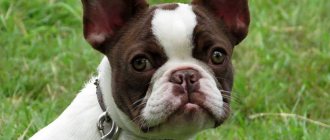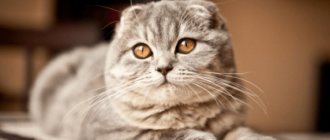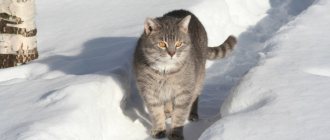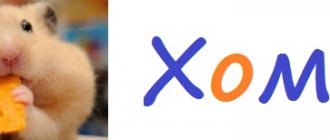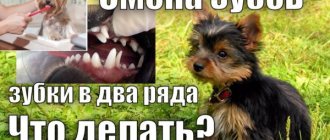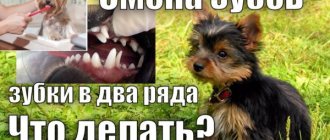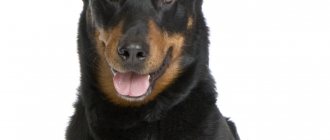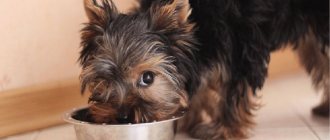Yorkshire Terriers are small, friendly bundles of joy. Dogs that are not spoiled by shaggy hair. Yorkies also often wear rubber bands and hairpins. Whether they like it or not, we don't know. But their owners are definitely delighted with this. Not everyone realizes that behind its cute appearance lies a brave and devoted creature, ready at any moment to defend its owner.
Yorkshire Terrier. History of the breed
These cute creatures do not claim ancient origins. They appeared a century and a half ago.
The homeland of the Yorkshire Terrier is Lancashire and Yorkshire. Counties in the north of England.
In the 18th centuries, landowners forbade peasants from owning large dogs to prevent them from poaching. That's why they had little ones, helpers and companions.
At the end of the 18th century, industrialization began in England. People from all over the country began to move to the cities in the west of the county to find work there. They carried four-legged pets with them. It was these small peasant dogs that became the ancestors of the Yorkshire terriers.
The breed was developed by weavers. They managed to get dogs that were bluish-steel in color with golden-brown markings. What made her stand out from her peers was her long, silky fur. The new breed was called the Yorkshire Silky-Coated Blue and Tan Terrier.
The first Yorkies were different from modern representatives of the breed. They had an elongated body format and weighed about 7 kilograms. Silky-haired cats quickly gained popularity. Other breeds of small English terriers have supplanted them. And some were completely supplanted.
Yorkshire Terriers have many official ancestors. These include terriers:
- Clydesdale;
- sky;
- Paisley;
- Cairo.
The first and third types of terriers were not recognized as independent breeds, but modern Yorkies are most similar to them.
Some sources claim that one of the ancestors of the York dog was the Maltese. But outwardly these dogs are different. It is said that Yorkies and lapdogs were crossed in order to obtain a softer, silkier coat from the former. It is difficult to refute this theory, since light Yorkies have really high-quality and soft wool.
Officially, the history of the Yorkshire Terrier breed dates back to 1886. It was then that the English Kennel Club recognized them as an independent breed. The first breed standard was adopted by the Kennel Club in 1898.
Yorkshire Terriers in Russia
The first Yorkshire Terrier appeared in Russia in 1971. It was presented to the famous ballerina Olga Lepeshinskaya. The ballerina's dog caused everyone's delight. Many people at that time dreamed of having the same pet. It was almost impossible to do this at that time. In the Soviet Union, no one was breeding Yorkshire terriers. You could only buy such a dog abroad. Only members of the elite could afford this. They brought the first representatives of the breed to the country. For ordinary people, Yorkies remained a pipe dream. The situation changed in the 90s of the 20th century.
In 1991, the first private kennel of Yorkshire terriers was founded in Mytishchi. Breeding material was brought there from England, France and Spain. A dog with a charming tail on its head has captivated the Russians. They quickly spread throughout the country.
Métis
Separately, I would like to say about those puppies in whose veins the blood of purebred Yorkies and representatives of other dog breeds flows. They have no breed value, but a layman might think that they meet breed standards. Such puppies cost much less than purebred ones, do not have documents, and it is strictly forbidden to involve them in breeding, since they will no longer be able to produce purebred offspring. But as an option for a dog for the soul, mixed breeds of large Yorkies can be considered.
Interesting facts about Yorkshire Terriers
From warrior to television star
The most courageous representative of the breed is considered to be the female Smokey. There are 6 monuments erected to her in the USA. The most famous in Ohio, in the city of Cleveland.
During the Second World War, American soldiers found the dog in the jungles of New Guinea. She sat alone in an abandoned trench. The owner of the Yorkie was US Air Force pilot William Wynn. She went with him to the Pacific theater of operations. As part of the 26th reconnaissance squadron, she flew 12 combat missions. For this she was awarded 8 stars for service. Jumped with a parachute. Barking warned the soldiers about the threat of bombing. She saved the lives of military personnel more than once.
She helped military engineers lay cables during the construction of an airfield in Lingguayen Bay on the island of Luzon in the Philippine archipelago. The tiny size allowed her to crawl through an underground pipe and pull a wire through it. Thanks to her help, military builders reduced the construction time of a strategic facility and saved on finances and human resources.
In her free time, she entertained the wounded. She showed the tricks that her owner had learned with her. One of them - Smokey walked on a tightrope blindfolded.
The legendary Yorkshire terrier Smoky.
After the war, little Smokey became a star on American television. The owner and his colleagues talked about the dog’s exploits. And she demonstrated funny tricks that she knew a lot of. The audience applauded with delight when the tiny dog chose the right ones from a variety of letters and spelled out its name. All of America fell in love with the little heroic Smokey.
The heroic Smokey lived for about 14 years. Nobody knew the exact date of her birth. She died on February 21, 1957.
On November 11, 2005, a monument to the heroic dog and America's favorite was unveiled in Cleveland. Smokey, made of life-size bronze, sits in a soldier's helmet. The sculpture is installed on a granite pedestal. This monument is dedicated to all four-legged US soldiers.
Smallest in size
The Yorkshire terrier from England, Sylvia, is included in the Guinness Book of Records. She is recognized as the smallest representative of the breed. Her weight is only 113.4 grams, with a height at the withers of 6.35 centimeters.
Tags
about Yorkshire TerriersHistory of the Yorkshire Terrier1. Yorkshire terriers are an energetic dog breed, a famous dog breed, several terrier breeds, Yorkshire terrier dogs, the success of the breed needs the father of the breed is a new breed of dog. dogs breeds of dogs and breeds of dogs 2. Dog breeds of these dogs were large dogs small dogs. Yorkshire terriers Yorkshire terriers are rich. Yorkshire terriers were originally terrier breeds Yorkshire terriers also
rodentscat better only due menu nicknames photo article history of cats november news birds
Yorkshire Terrier. Description
The Yorkshire Terrier is one of the smallest dog breeds. Her coat is naturally long and falls evenly to the sides. There is even a parting from the nose to the tip of the ponytail. The Yorkie's posture is proud and important. The dog always looks elegant.
The average height of a Yorkshire terrier is 15–17 cm. The weight of these dogs according to standards is no less than 2.3 kg and slightly more than 3.1 kg.
Based on size, Yorkies are divided into 4 types:
- Big. Height is a little more than 22 cm, weight is a little over 3 kg.
- Standard. Height 15 - 20 cm, weight 3 kg.
- Mini. Their weight ranges from 1.6 kg to 2.2 kg.
- Micro. Weight 1ー1.5 kg.
Frame
A description of the Yorkshire Terrier breed would not be complete without mentioning the Yorkie's build. It harmoniously combines moderate muscularity and elegance.
The body is proportional, the back is horizontal and very short. The height of the croup is the same as the height of the withers. Strong loin, moderately sprung ribs.
Head
The skull does not have a round or convex shape. It is flat and small. The third part of the length of the head is the length of the muzzle. The face itself is neat and short with a black nose. The neck has a good length.
Eyes
The beauty of Yorkshire Terriers is their intelligent eyes with dark eyelids. They are medium in size, erect, dark and shiny.
Ears
Quite small, similar to the English letter V. Standing. Not too wide apart. Covered with short fur.
Teeth
Yorkies have excellent teeth with an even, regular scissor bite. The upper ones fit tightly in front of the lower incisors. The jaws are straight, the teeth stand vertically.
Limbs
The front legs are straight, the elbow joints do not protrude. If you look directly at the hind legs, they are also straight. The knee joints are not noticeable. All four paws are abundantly covered with fur. Brown-red coat color according to the standard is no higher than the elbows. The tips of the coat are lighter than the roots.
The claws are black. Yorkies often have dewclaws. They must be removed.
Movement
The Yorkshire Terrier is free to move. Graceful and energetic.
Tail
According to old standards, the tail had to be docked, that is, shortened through surgery. Now this is not at all necessary. The tail is held slightly above the line of the back and is abundantly covered with fur.
Wool
The fur of these dogs has no undercoat. Thanks to this, Yorkshire Terriers practically do not shed. Their fur is very similar to human hair. It also grows and sometimes falls out, but only when scratched or severely damaged.
Color
The Yorkshire Terrier has a black and brown color standard. When the puppy is about six months old, the black color on the coat acquires a bluish tint, and the brown color becomes lighter. By about one and a half years, the fur on the Yorkie's body is a dark, bluish-steel color, but the paws, muzzle and chest become golden fawn.
Yorkies may come in other colors not provided for in the breed standard. The reason is an admixture of blood from another breed or a mutation at the genetic level.
White color. Sometimes with a yellowish tint. The wool's structure is no different from the standard. There may be markings on the paws, tail and head, which is generally characteristic of this breed.
- Chocolate color. These dogs are called Choco-Yorks or Biro-Yorks. They are classified as a separate breed. The entire fur is delicate chocolate tones without any pronounced markings.
- White and black color. The dog's body is black, and there are light spots on the head, paws and tail.
- Black color. Such animals have short hair, which is coarser, thinner and shorter.
Personality of the Yorkshire Terrier
The Yorkie's character includes many contradictory qualities. But it is precisely this feature that makes these English dogs charming and unique.
Despite the fact that Yorkshire Terriers are perceived as small lap dogs and are often pampered, they are very impulsive, active and energetic. They have a “terrier” character. If possible, they will get involved in a mess. They will gladly take part in games with their fellow tribesmen, even if they are larger than them. They tend to bark at anything that moves.
Stubborn and restless. At the same time, they are smart and quick-witted. With skillful approach, they can be taught many tricks.
Tendencies to fight for leadership in the family. To avoid problems later, it is necessary to raise your pet from an early age.
Yorkshire Terrier is a hunting dog. His ancestors were excellent rat catchers. They passed this skill on to their descendants. Despite their small size, Yorkies can easily cope with mice and rats. In the modern world, most owners do not require their pets to protect their home from pests. However, dogs will never miss an opportunity to catch a rodent. Hunting is fun for these kids.
Loyal to the owner. Attached to him. When going out into nature, you can safely let him off the leash and relax. He won't run away. Yorkies only show that they are brave and independent. In fact, it is very important for them that their person is “in front of their eyes.”
Jealous. If the owner pays attention to another animal, the small dog experiences mental suffering. He needs to be treated with respect and love.
Sociable and inquisitive. Strive to make friends with everyone around you.
Loneliness is hard to bear. They prefer to always be close to the owner. Spin around his feet or sit on his lap. You should not leave your pet alone in the house for a long time. If necessary, prepare toys for him in advance. Otherwise, he can ruin your things, chew furniture, and make a mess in the apartment.
Friendly. They will never conflict with other four-legged housemates. They get along especially well with cats. But their attitude towards strangers largely depends on how the owner raised them. Untrained pets rush at large dogs, causing trouble for themselves and for the owner. That's why they are jokingly called Ruffy Terriers.
These dogs love to travel. If your pet is accustomed to a car from an early age, he will be happy to keep you company even on long trips.
Education and training
These kids are highly intelligent. It is not at all difficult to train them. You need to start training when Yorkshire terriers are still very young. Don't forget that most small dogs have a "refined" nervous system. Yorkies are no exception. A sudden movement or sound can frighten your pet and lead to a nervous breakdown. It is especially important not to scare your Yorkie as a puppy. Otherwise, the consequences may last a lifetime.
As soon as your four-legged baby arrives at home, introduce him to all family members. People and animals.
Start accustoming your new family member to different sounds. Do not forget that this must be done with extreme caution and gradually. Speak more quietly, turn down the volume on the TV for a while. Of course, don't rattle pots in the kitchen.
Yorkie is a charming and fashionable creature, but you shouldn’t rush to show it off to everyone right away. The pet must also get used to affection and warmth. Only after he feels comfortable enough in the family circle can you introduce him to the world.
Yorkies, like all dogs, need socialization. Start your walks in quiet streets and parks. Then gradually move towards crowded ones. When your pet gets used to them, go to the central ones, with a large flow of cars. If the puppy is nervous, pick him up.
Always keep your dog in your arms or on a leash when going out into traffic. No matter what age he is. Even an adult Yorkshire Terrier can get scared, confused and get hit by a car.
Be sure to get your baby accustomed to the car. First, go with him to the car. Let him stand next to her. Only when he gets used to it can you put him inside. This is an important skill. In life, there is often a need to travel by transport to a groomer or veterinarian. Or just go on a trip. The little companion must be prepared for such a development of events.
It’s best to start learning commands with simple ones: “come to me”, “sit” and “nearby”. When training, a person should be restrained and persistent, but not aggressive. Otherwise, the pet may simply get scared and become stubborn. This dog loves treats as incentive and motivation. And don't forget about the pet's character. It is difficult for a dog with a tail on his head to sit in one place and repeat the same commands. For training to be productive, it must be short-lived. No more than 30-40 minutes a day. This time should be divided into 3 to 5 lessons.
Yorkies tend to fight for the role of leader in the family. To avoid problems later, it is important to show your Yorkie puppy who is boss in the family from the first days of his arrival in the house. This can be done in simple “painless” ways. After a walk, the dog should enter the apartment only after the owner. The pet should not receive food until the owner has eaten.
Your dog will feel comfortable if he follows a schedule. Set a time for your baby to feed, sleep, exercise, and walk. Stick to a schedule. The dog will become more disciplined and calm. The reason is that he will learn when to expect food, a walk, and games with the owner. Dogs love order. Over time, the four-legged pet will demand punctuality from the owner.
Pay close attention to furniture, slippers and other things. The Yorkshire Terrier will easily turn them into their toys and render them unusable. If this happens, do not be offended by your pet. They didn’t notice it themselves. Never use physical force as punishment. It is enough to say the command “you cannot” in a stern tone and take the forbidden thing from the Yorkie. You can scold a little. Let the dog understand that you are unhappy. However, this can only be done at the moment when the naughty man is caught red-handed.
Yorkie diseases
Despite their external fragility, Yorkies have good health. If we are talking about purebred representatives of the breed, then they also have a stable psyche.
Most often, Yorkie owners turn to veterinarians due to ear inflammation (due to hypothermia), tartar formation, and gum inflammation.
As a result of an unsuccessful jump, Yorkies are prone to such types of injuries as: dislocations, fractures, sprains, and torn ligaments. Improper feeding leads to excess weight in dogs. And in this case they are recommended to be put on a diet. A fat Yorkie looks not only ridiculous, but also unattractive.
Also, in order to protect your dog from colds and frostbite on its paws, it is better to purchase special shoes and warm overalls for walks in the cold season. However, in order to protect animals from hypothermia, some owners teach their pets to go to the toilet in the house, on a diaper or in a litter tray.
Care and maintenance
After your baby is in a new home, he needs to be shown a warm corner and preferably a tray. This way he will feel more comfortable.
The Yorkshire Terrier requires careful care of its coat. True, he doesn’t like all these procedures: bathing, combing and haircuts. If your pet has long hair, then bathe it 1-2 times a week. If the coat is short, once a month is enough. The dog should be combed at least 2 times a day. A massage brush with metal teeth or a comb is quite suitable for this.
Before bathing, be sure to comb your pet. It is advisable to put a rubber mat in the bathtub so that this miracle does not slip. The optimal water temperature is 35 degrees. It is necessary to use a special shampoo for dogs with long hair. After bathing, the pet must be wrapped in a towel and taken to a warm room. Dry the wool with a hairdryer. Then comb again. Excessively grown and protruding hairs can be shortened. Pay special attention to the paw pads, hair on the tips of the ears and the anus.
You can judge the owner by how the Yorkshire Terrier looks.
Some owners of dogs with ponytails put up with the fact that their dogs do not always look well-groomed. It is enough for them to be clean and healthy. But if you want your dog to shine at the show and attract admiring glances, you will have to work hard.
Owners of dog ring stars brush their pets every day, several times a day. They wash their fur with special expensive shampoos and make masks for their dogs. Show Yorkshire Terriers often wear curlers at home. All this is done in order to be in full dress at the right moment.
Yorkies need their nails trimmed two or three times a month. Ideally, do this after water procedures. They can be capricious, so be careful. Just in case, keep a styptic pencil nearby. But if you are not confident in your abilities, you can contact a grooming salon. There, if necessary, they will do a breed haircut.
Yorkies need to have their teeth brushed periodically. Otherwise, caries will appear. In the morning and evening, wipe the corners of the eyes and clean the ears with wet wipes. Remove dirt, secretions, and wax.
You can create many interesting hairstyles on your pet's head. The most common of them is the ponytail. He has long become a kind of symbol of the breed. Yorkie fashionistas don't mind at all. After all, they are accustomed to such manipulations from childhood. They get used to it. Hairpins and rubber bands do not interfere with doggies.
Feeding
Yorkies are not prone to overeating. Often the food bowl may remain full. This is fine. The pet will eat as much as it needs.
Yorkshire Terriers can be fed either special food or homemade food. If you choose the second option, make sure that your diet includes chicken and beef. The meat should be slightly cooked. Don't forget about cereals. Buckwheat and rice are perfect for your pet. These dogs do not always like fermented baked milk and cottage cheese, but it is good for them to eat them in small quantities.
Do not deny your pet the pleasure of eating fruits and vegetables. Moreover, they also contain many useful vitamins.
Foods you should not feed your Yorkie:
- chocolate and other artificial sweets;
- semolina and rolled oats;
- smoked, fried or fatty;
- citruses, grapes;
- nuts;
- fatty sausage and cheese;
- mushrooms.
Walk
It is not difficult to train a Yorkshire Terrier to relieve itself in a litter box. They're smart. They quickly understand what the owner requires of them. Usually busy or lazy people get out of the situation in this way.
You should understand that even if you have trained your pet to relieve itself in a litter box or in a diaper, it still needs walks. Fresh air and physical activity are necessary for the dog to function properly.
These dogs love to walk, but they need to be accustomed to this gradually. You can take your baby outside only after vaccination, which is given at 2 months of age. In this case, the weather should be warm, and spending time in the fresh air should not exceed 20 minutes. Gradually, the duration of walks should be increased. An adult Yorkshire Terrier should walk at least 2 times a day for an hour.
Yorkshire Terrier Health and Diseases
Unfortunately, Yorkshire Terriers are prone to a number of diseases.
Dogs can have low blood sugar. This will be indicated by lethargy and low temperature. You should contact your veterinarian as soon as possible.
As they get older, Yorkies often develop cancer. The most common types: stomach and blood. Also, in old age, problems with joints, paws, and neck may appear. This set of ailments is associated with the fragility of the dog’s bones.
Neurodermatitis may occur in your pet due to nervousness or stress. The pet will constantly lick itself, which will lead to hair loss. If this happens, do everything to get your pet out of its harmful state: change the environment, change the four-legged regime and lifestyle.
Make sure your pet doesn't play around in hot weather. It may overheat. In winter, take care of his wardrobe. Buy a jacket and boots for him in advance. Without them, he risks freezing and catching a cold.
They are very rarely obese. If an adult Yorkshire Terrier weighs more than four and a half kilograms, consult a veterinarian. He will select a diet and tell you how best to organize physical activity.
Pros and cons of the breed
Before you buy a dog, you need to find out everything about it, about all the advantages and disadvantages of the breed you have chosen. This article is about Yorkshire terriers, so we will consider the pros and cons of representatives of this breed:
Advantages of Yorkshire Terriers:
- Playfulness;
- Cheerfulness;
- Intelligence and dexterity;
- There is no need for long daily walks;
- Attachment to the owner;
- Ideal breed for older people;
- Quickly gets used to any living conditions.
Disadvantages of Yorkshire Terriers:
- Excessive energy can tire the entire family;
- Sometimes there are problems with the toilet;
- Loud, like to bark for no reason;
- Difficult to train, especially if you do not start training from puppyhood;
- Excessive manifestation of a sense of ownership and jealousy towards the owner;
- Increased attention to the care of the long hair of Yorkies.
Popular questions about the breed
Attitude towards children. Is it suitable as a family dog?
This dog should not be owned by people who often go on long business trips. Yorkies love attention and care. It is also not recommended to take them into a large family. They don't like turmoil. They don't always get along with children. They may show aggression. Do not forget that these are small creatures and cannot tolerate noise.
The Ruffed Terrier will be an excellent companion for an adult, self-sufficient person who is ready to give love and care to his faithful friend.
Is it suitable for people with allergies?
Yorkies are perfect for those who suffer from allergies. The reason is the wool. Its structure resembles human hair. Doesn't smell, doesn't shed.
How many years do they live
The average life expectancy of these dogs is 12 - 15 years. Some individuals live up to 16.
But Yorkies of the “mini” and “micro” categories have weaker immunity. They live approximately 7 - 9 years.
Health
Like any other breed of dog, the Yorkshire Terrier is prone to certain diseases:
- Owners of mini Yorkshire terriers, whose weight is less than 1.8 kg, need to be prepared for the fact that they are very sickly than standard-sized dogs, since they have a weakened immune system. The lifespan of such Yorkies is 7-9 years.
- Cancer.
- Neurodermatitis.
- Teeth, brushing and removing tartar should be a mandatory procedure.
- Problems with the musculoskeletal system.
Preventative measures to protect your Yorkshire Terrier puppy
- To keep your Yorkshire Terrier puppy completely safe, you first need to minimize his contact with unfamiliar dogs, especially stray dogs. Therefore, you should not let your dog off the leash, as in this case it will become impossible to control its behavior and communication with other dogs. Since a dog can easily become infected with distemper from simply touching the nose of a sick animal. This disease can be transmitted to a dog through sniffing. Your dog can become infected with trichophytosis from contact with the lichen-affected fur of a sick dog. Naturally, it is impossible to completely exclude a dog’s communication with other dogs, since it must be socialized. Therefore, try to find friends with dog lovers who look after their animals. By adhering to this rule, you can eliminate the risk of pathogen transmission by 80%.
- You should walk your dog in places where there are no landfills. Since garbage very often attracts rodents, which in turn are very often carriers of various infections. Gray rats are especially dangerous because they carry such a serious disease as leptospirosis.
- You should not allow your dog to sniff other people's feces, as they are a source of worms.
- Monitor your Yorkshire Terrier's health. Pay attention to even the most minor changes in his behavior. For example, your dog may appear lethargic, lose his appetite, or have a dry nose. Or you may notice that the dog begins to shed, and this has nothing to do with seasonal shedding. If hair loss becomes excessive, this is the first symptom indicating health problems in your pet. And only you can help him. Therefore, it is important to take the dog to the veterinary clinic in time, where the disease can be overcome for sure. In no case should you ignore the symptoms, since advanced infections are much more difficult to treat, and sometimes even impossible. If you start treating your dog, the disease can lead to his death or he will develop serious complications that will affect his hearing, vision, limbs and much more.
Where can I buy. How to choose a puppy
Yorkshire Terriers are one of the most popular and promoted breeds of small dogs in the world. The Internet is replete with offers for the sale of puppies. Take your time to make a purchase. Choosing a new family member based on a photo is risky. Subsequently, he may not live up to your expectations. It’s better to contact local breeders and visit breed nurseries yourself.
A good breeder will be happy to show you the mother of the babies. If possible, then dad too. Shows the pedigree of the parents. Will tell about their exhibition career.
Tell the owner of the kennel for what purpose he is purchasing a Yorkshire Terrier puppy. Depending on this, he will offer you candidates. Anyone who dreams of participating in dog shows or breeding will be offered expensive puppies - show or breeding class. If you just need a friend and companion, perhaps a pet-class baby will do. This is a healthy puppy, but with slight deviations from the breed standard. He will love you no less than his standard siblings. It will cost less.
Have you decided to make your own choice? Start watching the kids. Give preference to an active, cheerful puppy who stands confidently on his feet. The baby's back should be straight. The nose is wet if he is awake. When sleeping, it can be dry. Gums are bright pink. Eyes and ears - no discharge. The tummy should not be bloated. The coat is silky and straight.
If you are planning a show career for your pet, first of all pay attention to the puppy's coat. Give preference to a baby with a dark color and red-golden spots. They can be on the chest, muzzle, the inside of the legs and under the tail - of different sizes and shapes. Do not take puppies with colors that do not meet the standard. The breeder may convince you that the baby will bloom. Don't believe it! Only a small white spot on the chest, if present, can completely rebloom.
After the transaction, the breeder must give you and your four-legged baby a veterinary passport, which records the vaccinations performed. And also a puppy card, which you will later exchange for the pet’s pedigree. Please note that the puppy's brand number must match the number written on the card.
Be careful when choosing a mini Yorkie! Don't buy it from strangers. Fraudsters often sell small, unhealthy dogs under their guise.
How much does a Yorkshire Terrier cost?
The price for Yorkshire Terrier puppies varies from 15 to 80 thousand. Depends on the status of the kennel and the class of the puppy.
A pet-class Yorkshire Terrier puppy will cost 15-20 thousand, breeding - 20-35 thousand, show class - from 35 and above.
Girls always cost a little more than males.
Four-legged babies without documents can be purchased for 5-10 thousand. But you need to understand that the quality of such puppies may be low. Be prepared that instead of a Yorkshire terrier you will grow up a dog of an unknown breed that vaguely resembles a Yorkie. But this is not the worst option. It is much worse if the dog suffers from serious illnesses.
Feeding rules, diet
On the first day your Yorkshire Terrier puppy arrives in your home, provide him with a food bowl and a drinking water bowl. This should be a place where the dog can eat quietly, otherwise the animal will pull food out of the bowl and drag pieces to a secluded corner, for example, under the table. In most cases, the place for feeding is determined in the kitchen, but this decision is entirely at the discretion of the owner.
New dog owners often make the same mistake of leaving food in their dog bowls all day. You can’t do this, after pouring food for your pet, wait about twenty minutes and remove the bowl, regardless of whether there is food left in it or not. Unlike food, clean, cool water should be available to the animal 24 hours a day. Do not teach your dog to bite, do not allow him to beg for treats during your own meal.
Starting from the first feedings, accustom your Yorkie puppy to the feeding schedule. You need to give your dog food at the same time. The number of feedings and the size of portions depends on the age and health of the pet. If a small puppy needs to be fed 5-6 times a day, then an adult dog needs 2 meals.
It is recommended to prepare the diet together with the veterinarian who is monitoring your pet. The diet must be balanced, the dog must receive all the vitamins and minerals necessary for the body. The owner himself decides which type of feeding to choose: natural or dry. Of course, it is much easier to buy ready-made food than to spend time preparing natural food. In both the first and second cases, it is unacceptable to use expired, low-quality feed.
When you take a small puppy from a nursery, be sure to ask the breeder what the baby ate before moving to a new place of residence. It is recommended not to suddenly change the usual diet; if you still want to switch your dog from dry food to natural products, this should be done gradually and very carefully to prevent stomach upset.
